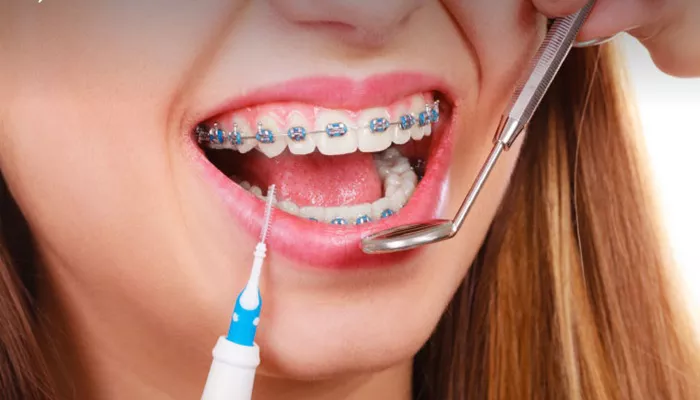Periodontal disease, also known as gum disease, is a common oral health issue that can affect people of all ages. It involves inflammation and infection of the gums and surrounding tissues that support the teeth. Understanding which forms of periodontal disease are reversible is crucial for maintaining oral health and preventing severe consequences. This guide provides a detailed, subtitled, and easy-to-understand explanation of reversible periodontal diseases from a dental professional’s perspective.
Understanding Periodontal Disease
Definition and Types
Periodontal disease primarily affects the periodontium, which includes the gingiva (gums), alveolar bone, cementum, and periodontal ligament. This condition is typically caused by the accumulation of plaque, a sticky film of bacteria that forms on teeth and gums.
Broadly, periodontal disease can be divided into two main categories: gingivitis and periodontitis.
Gingivitis: This is the mildest form of periodontal disease, characterized by inflammation of the gums. Gingivitis is reversible with proper oral hygiene and professional dental care.
Periodontitis: When gingivitis progresses and is left untreated, it can develop into periodontitis. This is a chronic, destructive, and irreversible inflammatory disease that affects the deeper tissues and supporting structures of the teeth.
Reversible Forms of Periodontal Disease
Gingivitis: The Mild but Reversible Form
Gingivitis is the most common and mild form of periodontal disease. It is characterized by red, swollen, and tender gums that may bleed easily during brushing or flossing. Gingivitis is primarily caused by the accumulation of plaque and tartar (hardened plaque) on the teeth and gums.
Symptoms of Gingivitis
- Red, swollen, and tender gums
- Bleeding gums during brushing or flossing
- Bad breath
- Sensitivity to hot or cold foods and drinks
Reversibility of Gingivitis
Gingivitis is reversible with proper oral hygiene practices and professional dental care. Here’s how:
Improved Oral Hygiene: Regular brushing and flossing at least twice a day can remove plaque and tartar from teeth and gums, reducing inflammation and preventing further damage.
Professional Dental Cleanings: Regular dental check-ups and cleanings by a dentist or dental hygienist can remove plaque and tartar that are difficult to clean at home.
Antibacterial Mouthwash: Using an antibacterial mouthwash can help reduce the bacteria in the mouth and prevent plaque buildup.
Dietary Changes: Avoiding sugary snacks and drinks can reduce the risk of plaque formation. Eating a balanced diet rich in vitamins and minerals can support gum health.
By addressing the underlying causes of gingivitis and following these steps, gingivitis can be reversed, and gum health can be restored.
Early-Stage Periodontitis: Potentially Reversible with Prompt Treatment
Periodontitis is a more severe form of periodontal disease that occurs when gingivitis progresses and is left untreated. It is characterized by the destruction of the periodontium, leading to loss of attachment, bone resorption, and potential tooth loss.
However, it’s important to note that early-stage periodontitis may still be reversible with prompt and aggressive treatment.
Symptoms of Early-Stage Periodontitis
- Deepening gum pockets (spaces between the teeth and gums)
- Persistent bad breath
- Receding gums
- Loose teeth
- Changes in bite or fit of dentures
Reversibility of Early-Stage Periodontitis
While periodontitis is generally considered irreversible, early-stage periodontitis may respond well to aggressive treatment and can potentially be reversed or at least halted in its progression. Here’s how:
Deep Cleaning (Scaling and Root Planing): This procedure involves removing plaque and tartar from above and below the gum line, as well as smoothing the root surfaces to prevent bacteria from recolonizing.
Antibiotics: Prescription antibiotics may be used to kill bacteria in the mouth and prevent further infection.
Periodontal Surgery: In some cases, surgery may be necessary to remove damaged tissue, reshape the bone, or regenerate lost bone and tissue.
Maintenance Therapy: Regular follow-up visits and maintenance therapy, such as deep cleanings and antibiotics, are essential to prevent the recurrence of periodontitis.
By addressing early-stage periodontitis promptly and with aggressive treatment, it’s possible to halt its progression and, in some cases, reverse the damage.
Preventive Measures to Avoid Periodontal Disease
While gingivitis and early-stage periodontitis may be reversible, preventing periodontal disease altogether is the best approach. Here are some preventive measures that can help reduce the risk of developing periodontal disease:
Brush and Floss Daily: Regular brushing and flossing at least twice a day can remove plaque and tartar from teeth and gums, reducing the risk of inflammation and infection.
Regular Dental Check-ups: Visiting the dentist for regular check-ups and cleanings can help detect and treat periodontal disease early.
Balanced Diet: Eating a balanced diet rich in vitamins and minerals can support gum health and reduce the risk of plaque formation.
Quit Smoking: Smoking is a major risk factor for periodontal disease. Quitting smoking can significantly reduce the risk of developing gum disease.
Manage Stress: Chronic stress can negatively impact oral health. Managing stress through exercise, relaxation techniques, or counseling can help maintain oral health.
Conclusion
Periodontal disease is a common oral health issue that can affect people of all ages. While periodontitis is generally considered irreversible, mild forms of periodontal disease, such as gingivitis, and early-stage periodontitis can be reversed with prompt and aggressive treatment. By understanding the risk factors, symptoms, and preventive measures associated with periodontal disease, individuals can take proactive steps to maintain their oral health and prevent severe consequences.
Related topics:

